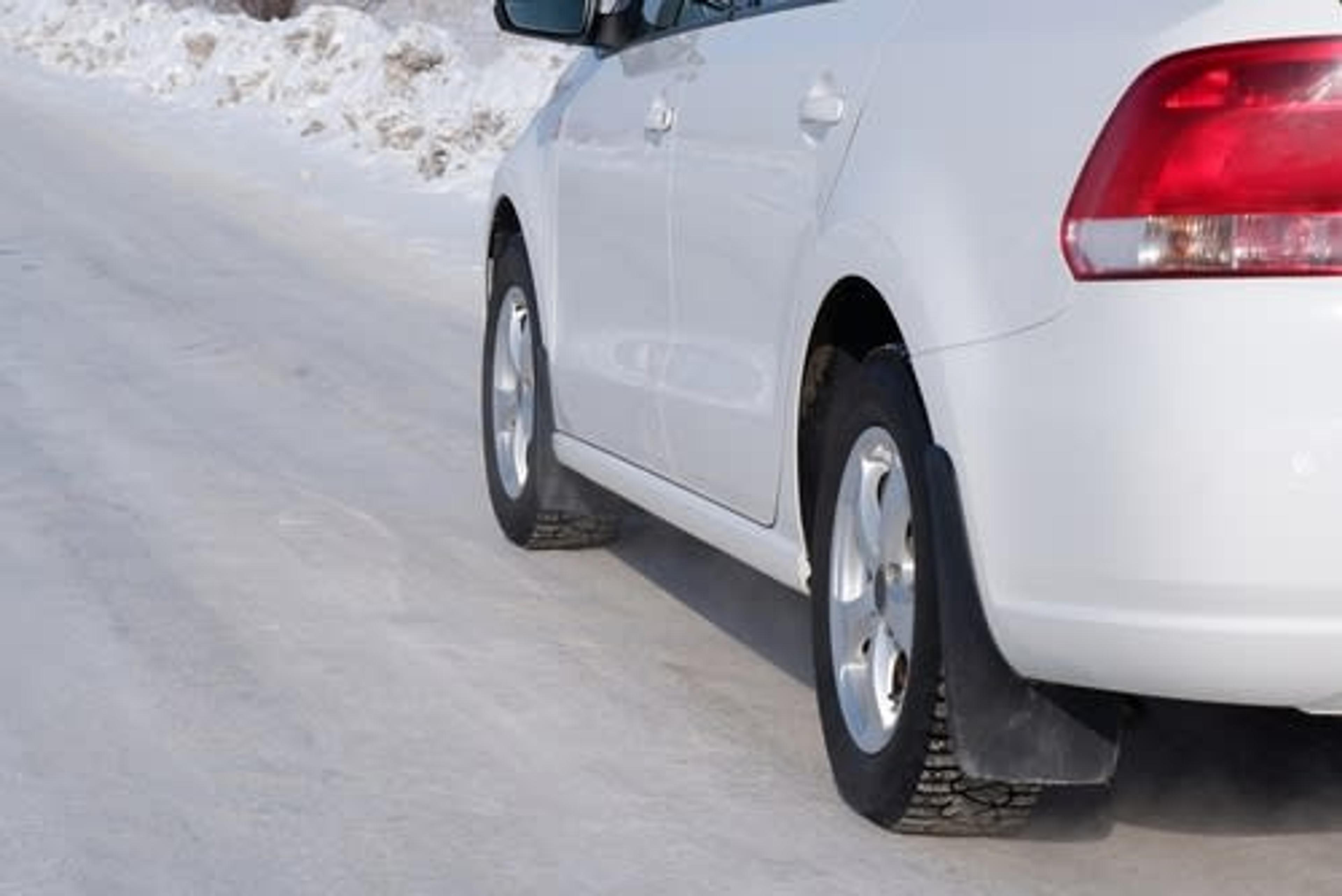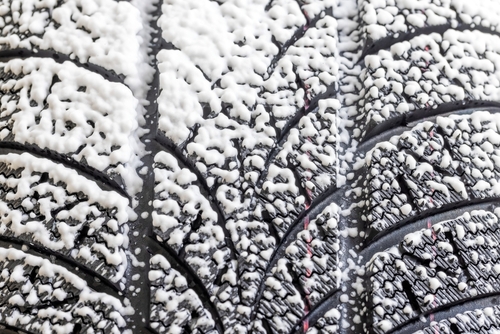Tire maintenance & safety
Safety tips for winter tires

Tire maintenance & safety

Winter weather typically means driving through hazardous snow and icey roads. Properly maintained and installed winter tires are your first line of defense when driving in winter conditions.
Quality snow tires are designed to handle these harsh conditions thanks to their specialized tread depth and rubber properties, but there are several secrets to getting the most out of your snow tires.
Learning these winter tire safety tips before temperatures drop will prepare you for the cold weather season.
The best time to change your tires depends on the air temperatures in your region. Winter tires are specifically engineered to perform at temperatures at or below 45 Fahrenheit. Making a note of weather forecasts can help you pinpoint when the change will be the most beneficial, but keep in mind that these are only forecasts so they’re subject to change.
When the weather warms up, and temperatures are consistently above 45 degrees, it's time to switch back to all-season, all-weather, or summer tires. In regions with a relatively short cold season, a set of high-quality winter tires will last for several seasons.
Stopping time and traction are the difference between safely reacting to winter driving conditions and potential disasters. Winter tires get up to 15% better traction and stop 30-40% shorter than their all-season counterparts. In addition, the timely installation of winter weather tires makes winter driving safe and comfortable in any condition.

You may think that deeper treads are the primary difference between winter and all-season tires. While treads do differ greatly between all-season and snow tires, the biggest difference between the two can't be seen with the naked eye.
The rubber compound of winter tires differs significantly from that of all-season tires. All-season tires can become stiff and rigid in cold conditions, especially when temperatures are well below freezing.
Winter tires are designed to remain soft when air temperatures dip below 45 degrees, and this softer rubber grips minor imperfections on the surface of the road to ensure the tires do not lose traction in snow and ice.
Installing winter tires while the weather is still warm will do little more than increase your tire's drag and cost you more at the pump. Not to mention, you could be putting some serious wear on winter tires' treads, which might even lead to a blowout.
You know that winter tires stay softer in cold weather, but that's not the only way the seasons affect your tires. Cold air temperatures do more than change how your tires grip the road; temperature changes also affect the air pressure inside your tires.
As the temperature goes down, so does the air pressure inside your tires. This can be a drastic change if the weather changes in your region are sudden or extreme.
It's estimated that for every 10 degrees the temperature drops, your tires can lose 1 pound per square inch of air pressure. Knowing about the effect air temperature has on tire pressure can prevent unsafe driving conditions.

The air pressure in your tires affects everything from how much tread contacts the street to how well that tread can grip. Improper tire pressure can impact braking and handling, making it harder to control your vehicle in adverse winter conditions.
There's a persistent myth that leaving winter tires underinflated increases performance. While it is technically true that leaving winter tires below the recommended pounds per square inch does allow more rubber to make contact with the road’s surface, this does not increase safety or performance.
Ensuring your tires are appropriately inflated is imperative to tire safety. If the air pressure in your winter tires dips below the recommended level, you can experience shaking in your steering wheel and a significant increase in stopping distance. When traveling on snow-covered roads, improper handling and poor stopping time can be disastrous.
Air pressure is a key factor in tire safety. Constant monitoring of the air pressure in your tires is the easiest way to maintain an appropriate level. Tire pressure changes can be slow and subtle, so it's imperative to check your tire pressure at least once a month, more so in winter.
Tire pressure gauges are inexpensive and easy to find wherever auto parts are sold. At least once every four weeks, test the air pressure in each tire.
Most tire manufacturers recommend a maximum tire pressure of 30-35 PSI. Many cars also list an optimum tire pressure inside the driver's side door frame. Check this information for your vehicle and winter tires to be sure you're maintaining optimum pressure.
Properly inflated tires perform better, have longer tread life, and are much safer. According to NHTSA data (National Highway Traffic Safety Administration), vehicles with underinflated tires are more likely to be involved in a tire-related collision than those at ideal tire pressure.

Driving increases the temperature of the air inside your tire, so you won’t get an accurate reading shortly after driving. To get an accurate measurement of your tire's pressure, check it after your vehicle has been parked for at least three hours. When you know your tire's cold air pressure, you can determine if an adjustment needs to be made.
Tire pressure monitoring systems are invaluable in cold weather. These systems alert you if your tire pressure changes by 25% or more. Frequently checking your tire pressure on your own is your best defense against tire pressure safety issues but these automated systems are a fantastic backup.
Keep a tire pressure gauge on hand at all times. This small tool is easily stored in a glove box or center console. While they're easy to find at auto parts retailers, it's better to have a gauge on hand before you need it.
Tire pressure should be taken every cold-weather season when winter tires are installed. Ensure they're inflated to the proper air pressure before you take to the snowy streets this year. Maintaining this good habit in warm weather will mean good tire pressure hygiene all year long.
Driving in icy conditions is one of the biggest challenges of life in colder climates. By observing a few essential safety tips, you can avoid many of the pitfalls winter drivers face. Enjoy a safe winter season by taking a proactive approach to winter tire safety.
Search By